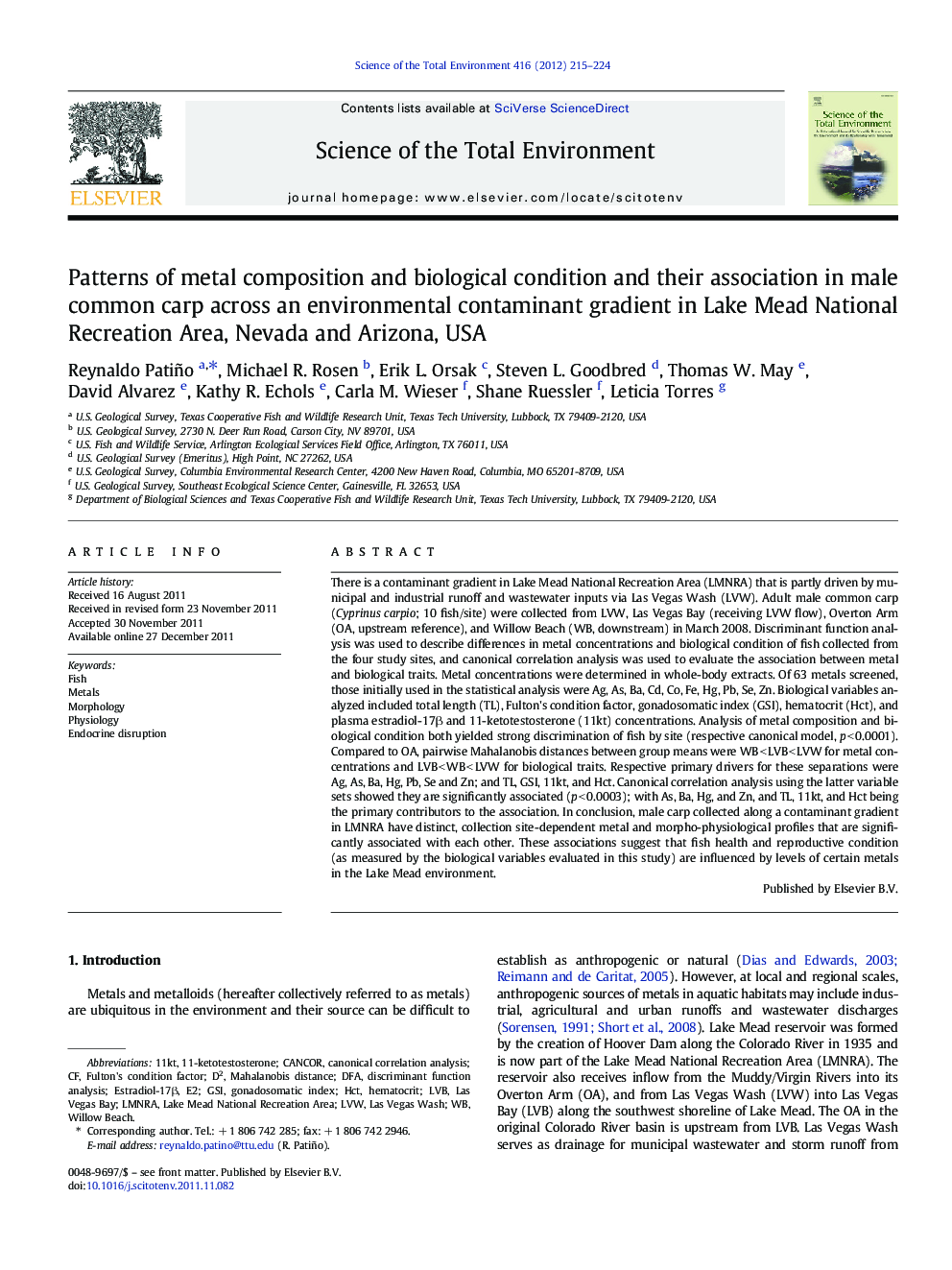| Article ID | Journal | Published Year | Pages | File Type |
|---|---|---|---|---|
| 4429822 | Science of The Total Environment | 2012 | 10 Pages |
There is a contaminant gradient in Lake Mead National Recreation Area (LMNRA) that is partly driven by municipal and industrial runoff and wastewater inputs via Las Vegas Wash (LVW). Adult male common carp (Cyprinus carpio; 10 fish/site) were collected from LVW, Las Vegas Bay (receiving LVW flow), Overton Arm (OA, upstream reference), and Willow Beach (WB, downstream) in March 2008. Discriminant function analysis was used to describe differences in metal concentrations and biological condition of fish collected from the four study sites, and canonical correlation analysis was used to evaluate the association between metal and biological traits. Metal concentrations were determined in whole-body extracts. Of 63 metals screened, those initially used in the statistical analysis were Ag, As, Ba, Cd, Co, Fe, Hg, Pb, Se, Zn. Biological variables analyzed included total length (TL), Fulton's condition factor, gonadosomatic index (GSI), hematocrit (Hct), and plasma estradiol-17β and 11-ketotestosterone (11kt) concentrations. Analysis of metal composition and biological condition both yielded strong discrimination of fish by site (respective canonical model, p < 0.0001). Compared to OA, pairwise Mahalanobis distances between group means were WB < LVB < LVW for metal concentrations and LVB < WB < LVW for biological traits. Respective primary drivers for these separations were Ag, As, Ba, Hg, Pb, Se and Zn; and TL, GSI, 11kt, and Hct. Canonical correlation analysis using the latter variable sets showed they are significantly associated (p < 0.0003); with As, Ba, Hg, and Zn, and TL, 11kt, and Hct being the primary contributors to the association. In conclusion, male carp collected along a contaminant gradient in LMNRA have distinct, collection site-dependent metal and morpho-physiological profiles that are significantly associated with each other. These associations suggest that fish health and reproductive condition (as measured by the biological variables evaluated in this study) are influenced by levels of certain metals in the Lake Mead environment.
► Body metal concentrations separated male carp in LMNRA according to collection site. ► Biological conditions also separated male carp in LMNRA according to collection site. ► Variability in metal concentrations substantially explained variability in biological condition. ► The health and reproductive condition of male carp may be influenced by its metal profile.
